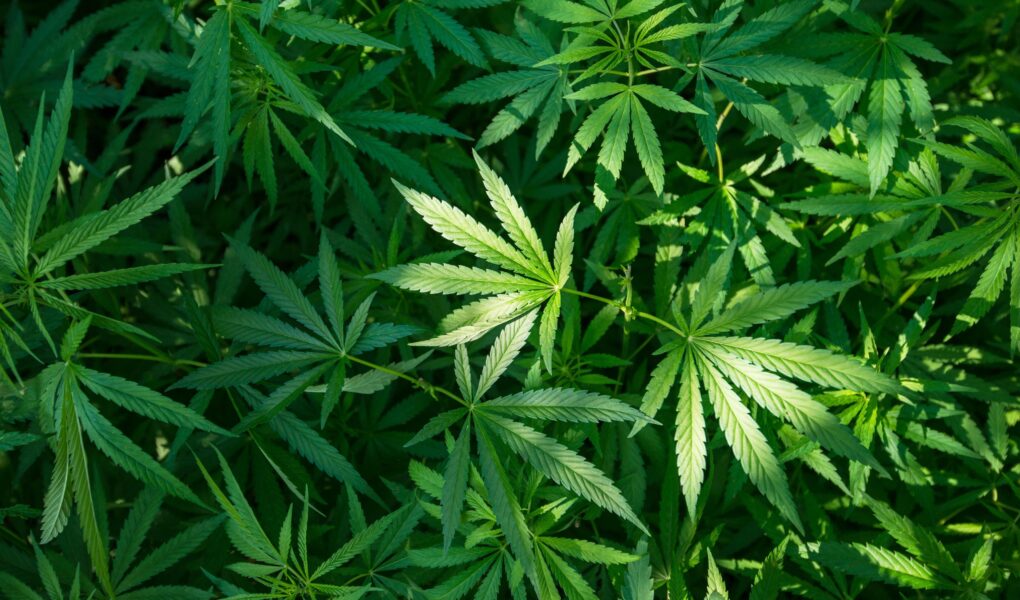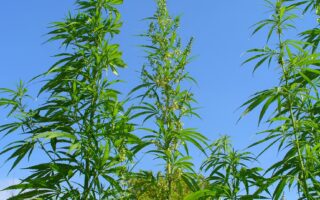Title: “The Green Enigma: Unraveling the Psychoactive Properties of Marijuana”
As the debate surrounding marijuana continues to evolve, many turn their eyes to a pivotal question: is marijuana truly psychoactive? This inquiry is not merely academic; it resonates through the realms of medicine, law, and popular culture, influencing perceptions and policies worldwide. With its multifaceted compounds and complex interactions within the human body, cannabis presents a unique puzzle. From the euphoric highs to the tranquil calm it can induce, its effects tantalize and perplex alike. In this article, we will delve into the science behind marijuana’s psychoactivity, exploring the nuances of cannabinoids, the role of receptors in the brain, and what the latest research reveals. Join us as we embark on a journey through the intricate world of cannabis, seeking to clarify whether this green plant is simply a source of leisure or a profound catalyst for change in our consciousness.
Table of Contents
- Understanding the Psychoactive Properties of Marijuana
- The Role of THC and CBD in Altering Perception
- Implications for Medical Use and Recreational Consumption
- Navigating Legal and Health Considerations Surrounding Marijuana Use
- Q&A
- The Way Forward
Understanding the Psychoactive Properties of Marijuana
The psychoactive effects of marijuana primarily stem from its rich composition of cannabinoids, the most notable being delta-9-tetrahydrocannabinol (THC). THC interacts with the endocannabinoid system in the human body, which plays a crucial role in regulating various physiological processes. This interaction can lead to a range of effects, including:
- Euphoria: Often described as a feeling of intense happiness or relaxation.
- Altered Perceptions: Changes in visual, auditory, and sensory experiences.
- Increased Appetite: Commonly referred to as “the munchies”.
- Anxiety or Paranoia: In some individuals, particularly with high THC concentrations.
Research indicates that the dose and method of consumption play significant roles in the intensity and duration of these psychoactive effects. For example, smoking marijuana typically results in a quicker onset of effects compared to edibles, which can take longer to process through the digestive system. Observational studies have shown that users might experience varied responses based on factors such as:
| Factor | Effect Type |
|---|---|
| Dose | Higher doses often amplify psychoactive effects. |
| Method of Consumption | Smoking leads to faster effects than edibles. |
| Individual Tolerance | Regular users may experience diminished psychoactive effects. |
The Role of THC and CBD in Altering Perception
THC, or tetrahydrocannabinol, and CBD, or cannabidiol, are two of the most well-known compounds found in cannabis. Their interactions with the body’s endocannabinoid system contribute significantly to how users perceive reality under the influence of marijuana. THC is primarily responsible for the psychoactive effects associated with marijuana consumption. It binds to CB1 receptors in the brain, leading to altered perceptions, heightened sensory experiences, and sometimes even changes in mood. Commonly reported effects include:
- Increased appetite
- Altered sense of time
- Enhanced sensory awareness
- Feelings of euphoria
On the other hand, CBD influences perception differently, acting more as a calming agent without causing a “high.” It interacts with CB2 receptors, which are largely found outside the brain and help regulate pain and immune response. Users of CBD often report a sense of clarity and relaxation, making it a popular choice for those seeking relief from anxiety or chronic pain without the psychoactive effects of THC. The interplay between these two compounds can create a holistic experience; for example:
| Effect | THC | CBD |
|---|---|---|
| Mind-Enhancing | High | Clear |
| Anxiety Levels | Can Increase | Often Decreases |
| Body Relaxation | Moderate | High |
Implications for Medical Use and Recreational Consumption
The psychoactive properties of marijuana have significant implications for both medical use and recreational consumption. On the medical front, proper understanding of its effects can lead to more effective treatments for a variety of ailments. Many patients utilize marijuana for conditions such as chronic pain, anxiety, and nausea, with specific strains and dosages tailored to their needs. When prescribed and monitored by a healthcare professional, the therapeutic benefits can include:
- Alleviation of chronic pain
- Reduction of inflammation
- Improvement in sleep quality
- Control over seizures
On the recreational side, the psychoactive nature of marijuana invites a complex approach to its use. Consumers may seek varying experiences, ranging from relaxation to heightened sensory perception. Understanding the strain and its cannabinoid profile is vital in this context, as some users might prefer:
| Type of Strain | Effects |
|---|---|
| Sativa | Uplifting, energizing effects |
| Indica | Relaxation, sedation |
| Hybrid | Combination of both effects |
Recognizing and respecting these distinctions not only enhances individual experiences but also shapes regulatory frameworks governing both medical and recreational use, ensuring safety and informed consumption.
Navigating Legal and Health Considerations Surrounding Marijuana Use
The evolving landscape of marijuana legislation has led to a complex interplay of legal and health considerations. As various jurisdictions grapple with the implications of marijuana use, individuals must remain informed about both the legal status of marijuana and its health impacts. While many regions have embraced legalization for recreational and medicinal use, discrepancies in laws can create confusion. Consumers should be aware of local regulations regarding possession, consumption, and distribution, as well as the potential for legal repercussions. Here are some essential legal points to consider:
- State vs. Federal Law: Marijuana legality can vary widely between states, and federal regulations may still classify it as a Schedule I substance.
- Medical vs. Recreational Use: Some states distinguish between medicinal and recreational usage, often requiring prescriptions for medical marijuana.
- Age Restrictions: Most places enforce age limits, similar to alcohol, impacting who can legally purchase or use marijuana.
On the health front, understanding the psychoactive properties of marijuana is crucial for responsible use. The primary psychoactive component of cannabis, tetrahydrocannabinol (THC), can cause varied effects on the mind and body, influencing everything from perception and coordination to mood and cognition. Users should consider the potential short-term and long-term effects before using products high in THC. The following table summarizes some key health considerations:
| Effect | Duration | Considerations |
|---|---|---|
| Increased Appetite | 1-3 hours | Can lead to overeating and related health concerns. |
| Altered Perception | 2-4 hours | May impair judgment and increase risk of accidents. |
| Anxiety or Paranoia | Variable | Some individuals may experience heightened anxiety. |
Q&A
Q&A: Exploring the Psychoactive Nature of Marijuana
Q: What does it mean for a substance to be psychoactive?
A: A psychoactive substance is one that affects the brain’s function, mood, perception, or consciousness. Psychotropic effects can range from altered sensory perception to changes in mood and thought processes.
Q: Is marijuana psychoactive?
A: Yes, marijuana is considered psychoactive. The primary compound responsible for its psychoactive effects is delta-9-tetrahydrocannabinol (THC). When consumed, THC interacts with cannabinoid receptors in the brain, leading to changes in mood, sensory perception, and cognition.
Q: What are the specific effects of marijuana on the brain?
A: Marijuana can lead to a range of effects, including relaxation, altered senses (such as heightened perception of colors and sounds), increased appetite, and, for some, anxiety or paranoia. The experience can vary widely from person to person depending on factors like dosage, individual tolerance, and the specific strain of marijuana used.
Q: Are all components of marijuana psychoactive?
A: Not all components of marijuana are psychoactive. While THC is well-known for its psychoactive properties, another major compound, cannabidiol (CBD), does not exert similar effects. CBD is often lauded for its potential therapeutic benefits without the high associated with THC.
Q: Does the method of consumption change the psychoactive experience?
A: Definitely. The method of consumption—be it smoking, vaping, edibles, or oils—can affect the intensity and duration of psychoactive effects. For instance, edibles often lead to a delayed onset of effects that can be much stronger and longer-lasting compared to inhalation.
Q: Is there a difference in psychoactive effects among different marijuana strains?
A: Yes, marijuana strains vary significantly in their chemical compositions, primarily THC and CBD levels. Indica strains may promote relaxation and sleepiness, while sativa strains are often linked to increased energy and creativity. Hybrid strains can offer a blend of both experiences.
Q: Are there potential negative psychoactive effects of marijuana?
A: Yes, while many users enjoy the effects of marijuana, it can also lead to negative experiences. These may include heightened anxiety, paranoia, impaired memory or attention, and in some cases, hallucinations. Understanding dosage and personal tolerance is crucial in mitigating these risks.
Q: Can marijuana lead to long-term changes in brain function?
A: Research on long-term effects is ongoing. Some studies suggest that regular, heavy use of marijuana, particularly starting in adolescence, may lead to changes in brain structure and function, potentially affecting cognitive abilities. However, more research is needed to fully understand these implications.
Q: How does legality affect our understanding of marijuana’s psychoactive effects?
A: The legalization of marijuana in various regions has opened doors for research, public dialogue, and education on its psychoactive effects. Legal frameworks often shape societal perceptions and access, influencing both research opportunities and individual experiences with marijuana.
Q: should we view marijuana solely as a psychoactive substance?
A: While marijuana is undoubtedly psychoactive, it’s essential to consider its complex nature—combining both therapeutic potential and recreational use. Understanding how it interacts with the body can help individuals make informed choices about its use.
The Way Forward
the question of whether marijuana is psychoactive invites a deeper exploration into the intricate dance of chemistry and consciousness. From the cannabinoids that bind to our brain receptors to the myriad effects that can vary vastly from person to person, the answer transcends a simple yes or no. As society continues to unravel the complexities of cannabis, embracing both its therapeutic potential and its recreational allure, one thing remains clear: understanding marijuana’s psychoactive properties is not just about chasing a high, but about grasping the profound connections it creates within us and the world around us. As we edge closer to a more nuanced narrative, let us engage with curiosity and an open mind, paving the way for informed discussions and responsible choices surrounding this multifaceted plant. After all, the journey into the psyche is as much about discovery as it is about understanding.


